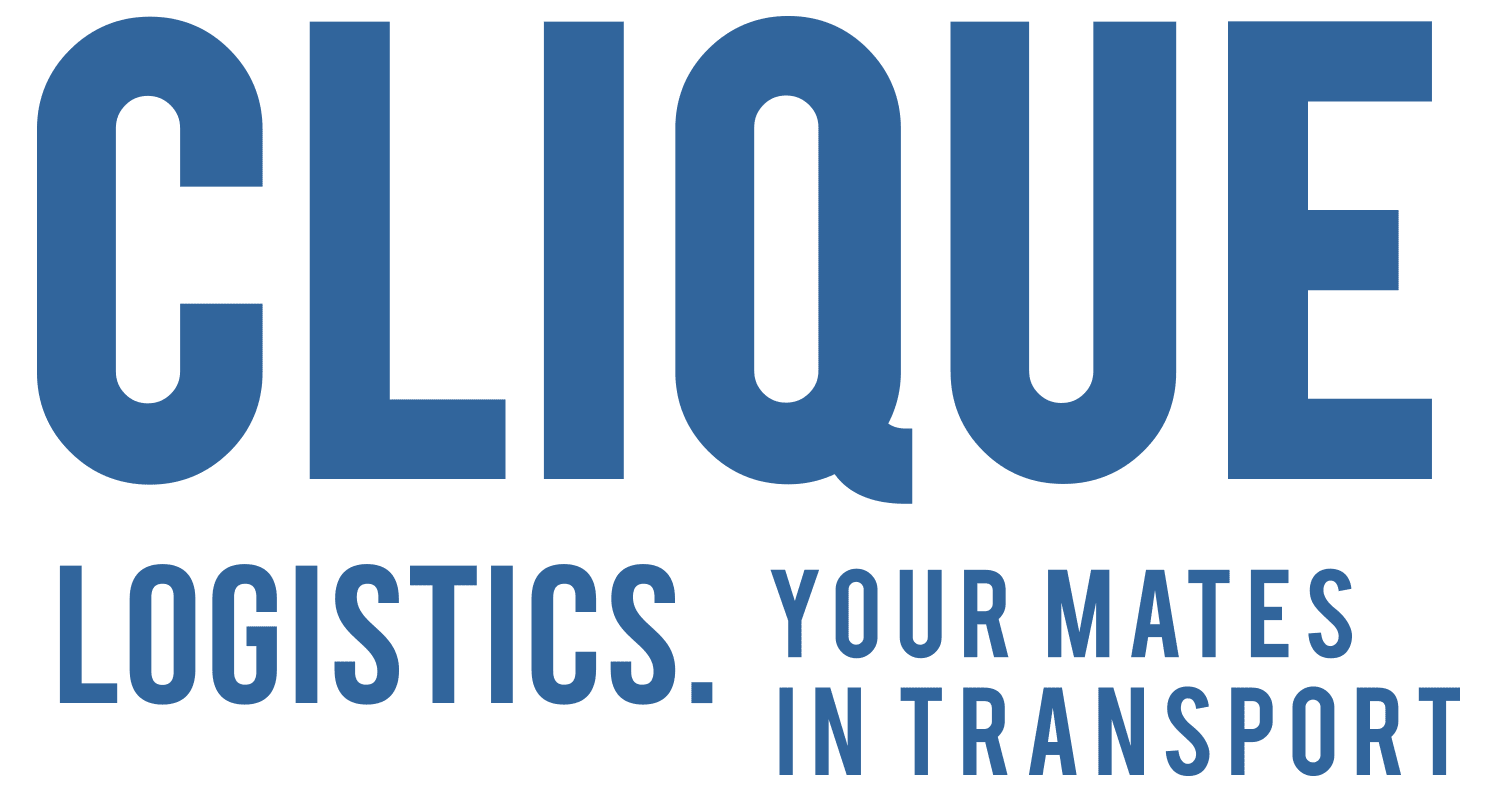When you think about the logistics challenges your business faces, have you considered how Transport Management Solutions (TMS) could transform your operations in Australia? These systems aren’t just about tracking shipments; they’re integral to enhancing efficiency, reducing costs, and meeting constantly changing consumer demands. As you weigh your options, it’s essential to understand the key features that make a TMS effective and how it can adapt to your unique needs. What you find next could change the way you approach your logistics strategy.
Importance of Transport Management Solutions
Transport Management Solutions (TMS) are essential for any business looking to optimise its logistics operations. By implementing a transportation management system, you can significantly improve your supply chain efficiency while reducing operational costs.
These solutions are designed to promote the seamless movement of goods, enabling you to expand your reach and adapt to global market demands.
One of the key benefits of TMS is the real-time visibility it provides. You can monitor shipments as they move through the logistics processes, which not only improves tracking but additionally boosts customer satisfaction.
When customers know where their orders are, they feel more secure and valued.
Moreover, TMS automates many transport logistics processes, which minimises human error and streamlines communication with carriers. This automation helps you make data-driven decisions, allowing better planning and execution of your logistics strategy.
By integrating TMS with your existing systems, you’ll encourage operational efficiency across geographically diverse regions.
In a competitive environment, leveraging TMS is vital for improving customer service and driving growth.
Embracing these solutions positions your business to respond swiftly to market demands, ultimately giving you an edge over your competitors.
Key Features of Effective TMS
When you’re looking for an effective Transport Management System (TMS), you’ll want to focus on key features like automated load planning, carrier management, and real-time analytics.
These components not only streamline your logistics processes but additionally improve decision-making and efficiency.
Automated Load Planning
Within the domain of logistics, automated load planning is a game-changer for optimising resource allocation. By utilising transportation management solutions, you can improve your efficiency and streamline operations. This feature of a transport management system (TMS) utilises real-time data and demand forecasts, ensuring that resources are allocated effectively.
Automated load planning employs advanced algorithms to calculate the most efficient routes and load capacities, significantly reducing transportation costs. You’ll notice improvements in delivery times as the system identifies the best options for each shipment.
With real-time visibility of inventory levels, carrier capabilities, and shipment schedules, you can make knowledgeable choices that improve your operational effectiveness.
Furthermore, a robust TMS automates the documentation process for loads, generating freight bills and compliance paperwork with minimal manual intervention. This not only reduces errors but also speeds up the entire process.
Integration with warehouse management and inventory control systems is vital, as it allows for seamless load planning and execution throughout your supply chain. Embracing automated load planning means you’re not just keeping pace with industry standards; you’re setting the bar higher for efficiency and responsiveness.
Carrier Management
In the field of logistics, effective carrier management is vital for optimising transportation processes and enhancing service delivery. With robust transport management systems (TMS), you can seamlessly integrate with multiple carriers, allowing you to compare service options and track shipments in real-time. This integration streamlines communication, making data exchange more efficient and reducing the risk of errors in freight operations.
One of the standout features of an effective TMS is its automated rating and quoting functions. These tools allow you to quickly access cost-effective shipping options based on current market rates, ensuring you make knowledgeable choices.
Furthermore, thorough reporting tools provide visibility into carrier performance metrics, which is fundamental for choosing the right carrier for your needs.
Real-time tracking and alerts keep you and your stakeholders updated about shipment status and potential issues, enhancing customer service. By leveraging these features, you can improve your carrier management, boost operational efficiency, and ultimately drive better outcomes for your logistics operations.
Embracing these capabilities won’t only streamline your processes but additionally help you stay competitive in the constantly changing transport environment.
Real-Time Analytics
Real-time analytics is a game-changer for transport management systems (TMS), empowering you to monitor logistics operations and make timely, data-driven decisions.
With transport management software that provides real-time information, you can track shipments and performance metrics through centralised dashboards. These dashboards display live freight metrics, giving you immediate access to vital data.
The real-time updates from multiple carriers can be integrated via APIs, allowing you to compare service levels, costs, and transit times quickly. This capability helps you identify inefficiencies and optimise routes, ultimately reducing operational costs and improving delivery performance.
Furthermore, real-time reporting features facilitate automated export of reports, streamlining communication and operational management. You’ll gain actionable insights that not only improve your decision-making but additionally improve customer service by ensuring transparency in logistics processes.
By leveraging these real-time analytics, you’ll be better positioned to respond swiftly to market demands and adjust strategies as needed. In a competitive environment, these capabilities are crucial for driving growth and maintaining an edge over competitors.
Adopt real-time analytics to transform your logistics operations and achieve greater efficiency.
Impact of TMS on Supply Chain Efficiency
Transport Management Systems (TMS) dramatically boost supply chain efficiency by optimising how goods move from point A to point B. By implementing a transport management solution, you can significantly reduce transportation costs while improving delivery times.
TMS provides real-time insights that allow you to track shipments and analyse data, helping you make better decisions about resource allocation.
With the automation of shipping processes through logistics software, you minimise human errors, which increases operational accuracy and reliability in your logistics operations. This means fewer delays and a smoother supply chain overall.
Furthermore, TMS solutions facilitate seamless integration with various carriers, streamlining communication and enhancing coordination across different transportation modes.
Moreover, a robust supply chain management system supports compliance with local and national regulations, reducing the risk of penalties and ensuring your operations run smoothly.
By leveraging these capabilities, you can respond swiftly to market demands and drive growth within your organisation.
In short, adopting a TMS transforms your logistics strategy, making your supply chain more efficient, responsive, and competitive in today’s fast-paced market.

Meeting Changing Consumer Expectations
Today’s consumers expect quick and reliable delivery options, so it’s essential for you to respond to demand fluctuations effectively.
By enhancing delivery timeliness, you not only meet these expectations but additionally boost customer satisfaction.
Embracing adaptable transport management solutions can help you navigate this evolving environment and keep your customers happy.
Responding to Demand Fluctuations
Adapting to demand fluctuations is vital for businesses aiming to meet changing consumer expectations in the logistics sector. By leveraging advanced analytics and real-time data, you can anticipate shifts in demand and adjust your operations accordingly. This proactive approach allows logistics service providers to optimise routing and improve service delivery, guaranteeing customer satisfaction even during peak periods.
Implementing efficient transportation planning is key. You can achieve this by developing flexible logistics strategies that allow for dynamic adjustments in capacity and resources. This means you’ll be able to scale up during high demand and downsize during slower periods without compromising service quality.
Collaboration across supply chains is fundamental for effectively managing these fluctuations. By encouraging communication with your partners, you’ll make sure that everyone is on the same page, enabling a smoother response to market changes.
Furthermore, automated shipping processes can help you manage order volumes more effectively, reducing lead times and enhancing overall responsiveness to consumer needs.
Incorporating these strategies won’t only keep your operations running smoothly but will also position your business as a reliable partner in the logistics environment.
Enhancing Delivery Timeliness
As consumer expectations evolve, ensuring timely deliveries has become essential for maintaining a competitive advantage in the logistics sector. Today, many customers demand same-day or next-day shipping, making it imperative for you to meet these rising expectations.
An advanced TMS solution can significantly improve your operations, allowing for real-time tracking of shipments and enabling you to optimise efficient routes. By leveraging these tools, you can minimise delivery times and enhance customer satisfaction.
Implementing effective logistics management strategies will help you fulfil orders quickly and accurately, thus nurturing customer loyalty. Automation plays a vital role in this process, reducing human error and ensuring consistent delivery timelines.
Moreover, integrating cloud-based logistics solutions provides you with better inventory management and resource allocation, which leads to cost-effective operations.
With the right technology in place, you can’t only meet but exceed your delivery promises, aligning your services with consumer demands for reliability.
Cloud-Based TMS and Advanced Technologies
In the area of cloud-based TMS, technologies like IoT, machine learning, and blockchain are revolutionising fleet management and logistics.
You can utilise IoT for real-time fleet monitoring, while machine learning helps optimise routes and improve operational efficiency.
Furthermore, blockchain guarantees secure and transparent transactions, giving you greater confidence in your transport management processes.
Role of IoT in Fleet Monitoring
The integration of the Internet of Things (IoT) in fleet monitoring has transformed logistics operations, making them more efficient than ever. With IoT sensors, you can track and monitor your fleet vehicles in real-time, enhancing visibility and operational efficiency. These sensors collect essential data on vehicle performance, maintenance needs, and driver behaviour, allowing you to make knowledgeable choices that save costs.
By leveraging cloud-based Transport Management Systems (TMS), you can utilise this IoT data to gain actionable insights, streamline logistics processes, and optimise route planning. This means fewer delays and better resource allocation, ultimately improving your service delivery.
Furthermore, IoT integration promotes predictive maintenance, which helps you reduce downtime by enabling timely interventions based on real-time data. This not only extends the lifespan of your vehicles but also keeps your fleet running smoothly.
In addition, the continuous monitoring capabilities provided by IoT guarantee compliance with regulations and safety standards, giving you peace of mind. By embracing these advanced technologies, you can drive your logistics operations toward greater efficiency, responsiveness, and competitiveness in today’s fast-paced market.
Machine Learning for Optimisation
Integrating machine learning into cloud-based Transport Management Systems (TMS) takes optimisation to the next level. By harnessing machine learning algorithms, you can optimise route planning and freight allocation. These systems analyse historical data and predict demand patterns, which leads to reduced operational costs and improved delivery times.
With real-time data processing capabilities, cloud-based transportation management systems allow you to make immediate adjustments to your logistics strategies. Whether it’s current traffic conditions, weather impacts, or supply chain disruptions, you’re always prepared.
In addition, predictive analytics improves inventory management by forecasting stock levels, minimising excess inventory, and enhancing your cash flow.
The automation of logistics processes, such as order fulfilment and shipment tracking, reduces manual errors and increases efficiency. You gain valuable insights into carrier performance, which allows you to make informed, data-driven decisions that improve service levels.
Plus, you can negotiate better shipping rates, ultimately boosting your logistics services. Embracing machine learning within your TMS not only streamlines operations but equally positions your business competitively in today’s fast-paced market.
Blockchain and Security in Transport Management
Blockchain technology revolutionises transport management by enhancing security and accountability in logistics. With its immutable records of transactions, blockchain guarantees data integrity throughout the supply chain, making it nearly impossible for fraud to occur.
As you implement cloud-based transport management systems (TMS), you’ll benefit from advanced encryption methods and secure data transmission protocols. This protects sensitive information from unauthorised access and cyber threats.
Integrating Internet of Things (IoT) devices with your TMS allows for real-time tracking and monitoring, significantly improving transparency. You’ll likewise find that advanced analytics tools can identify patterns and anomalies in shipment data, aiding in the early detection of potential security breaches. By harnessing these insights, you can proactively address issues before they escalate.
Furthermore, implementing multi-factor authentication and role-based access controls within your transport management systems guarantees that only authorised personnel can access critical data and functionalities. This layered approach to security strengthens your overall system and builds trust among stakeholders.
Benefits of TMS for Small Enterprises
While manoeuvring through the complexities of logistics, small enterprises can greatly benefit from implementing a Transport Management System (TMS). A TMS streamlines your transport management by automating the shipping process and optimising routing, potentially saving you 10-15% on freight expenditures. This reduction in operational costs helps you allocate resources more effectively.
You’ll likewise enjoy improved visibility and tracking of shipments, allowing real-time updates that improve customer service. When your customers receive timely information about their orders, their satisfaction levels rise significantly. By integrating a TMS, you can minimise manual errors and reduce the administrative workload, leading to increased efficiency in your logistics operations.
Furthermore, TMS solutions often offer access to multi-carrier shipping options. This feature allows you to compare rates and services, empowering you to make more cost-effective shipping decisions.
As your business grows, a TMS can improve your scalability, ensuring you manage increased shipping volumes and complex logistics without a hitch. Embracing a TMS isn’t just about technology; it’s about giving your small enterprise the competitive edge it needs to thrive in today’s market.
Future Trends in Transport Management Technology
As you look to the future of transport management technology, you’ll notice AI and predictive analytics playing a pivotal role in decision-making and efficiency.
Integrating these advanced tools with other supply chain solutions can improve your operations significantly.
Embracing these trends won’t only streamline processes but likewise position your business for greater success in a competitive market.
AI and Predictive Analytics
In the coming years, AI and predictive analytics are set to revolutionise transport management, significantly impacting how logistics operations function. By leveraging the capabilities of artificial intelligence, you can forecast demand and optimise routes, improving overall efficiency in logistics management and freight services for companies.
Predictive analytics can reduce operational costs by up to 20%, allowing you to make informed, proactive decisions in freight management. Machine learning algorithms analyse historical transportation data, identifying patterns that improve risk assessment and service reliability.
With these insights, you’ll gain real-time visibility into your supply chain, enabling you to respond swiftly to any disruptions or changes. As transportation management technology continues to evolve, the adoption of AI-driven solutions is expected to grow, with a projected market growth rate exceeding 15% annually over the next decade.
Investing in these advanced technologies isn’t just about keeping pace; it’s about staying ahead of the competition. With AI and predictive analytics, you’ll streamline operations, improve customer service, and ultimately drive growth in your logistics endeavours.
Adopt these innovations to boost your transport management strategy.
Integration with Other Supply Chain Solutions
Integrating transport management systems (TMS) with other supply chain solutions is transforming logistics operations and driving greater efficiency. By leveraging enterprise resource planning (ERP) systems, you can guarantee a seamless flow of information across your organisation. This integration allows for real-time data analytics, enabling you to make educated choices that optimise routing and resource allocation.
The use of Application Programming Interfaces (APIs) is becoming vital, facilitating smooth data exchange between TMS, ERP, and Warehouse Management Systems (WMS). With this interconnectedness, you can improve visibility and responsiveness throughout the supply chain.
As you adopt cloud-based solutions, you gain improved scalability and flexibility, accessing integrated functionalities from anywhere. Collaborative platforms are likewise on the rise, allowing you to communicate effectively with various stakeholders. This encourages coordination and alignment of transport management with overall business objectives.
As these technologies evolve, staying ahead of the curve in integrating your TMS with other supply chain solutions will be significant. By embracing these future trends, you can drive operational excellence and improve your competitive edge in the logistics realm.
Selecting the Right TMS for Your Industry
When you’re selecting the right Transport Management System (TMS) for your industry, start by evaluating your specific business needs and how they align with potential solutions.
Key considerations before implementation include compatibility, scalability, and user-friendliness.
You’ll likewise want to compare vendor options to find a system that meets your requirements now and as your business grows.
Assessing Your Business Needs
Selecting the right Transport Management System (TMS) hinges on understanding your business’s unique logistics needs and challenges. For logistics companies like yours, evaluating the volume and frequency of shipments is essential.
Consider the types of goods being transported and the complexity of your transport operations. These factors will significantly influence the functionality you require from a TMS.
Start by identifying current pain points in your operations. Is your delivery process slow or inefficient? Are there issues with warehouse management that impact your overall performance?
Pinpointing these areas will guide you in selecting a TMS that addresses your specific operational challenges.
Integration capabilities are another critical consideration. Verify that the TMS can seamlessly work with your existing systems, such as Enterprise Resource Planning (ERP) and Warehouse Management Systems (WMS).
This will promote improved data flow across your organisation, enhancing the management of transportation.
Lastly, conduct a cost-benefit analysis. Consider potential savings from improved efficiency and reduced operational costs to determine the return on investment for implementing a TMS tailored to your business needs.
Making knowledgeable choices now will set you on the path to optimised logistics operations.
Key Considerations Before Implementation
Before diving into the implementation of a Transport Management System (TMS), it’s vital to consider your industry’s unique logistical demands and future growth goals. Each logistics industry has specific requirements, so you need to assess these needs to guarantee the TMS can support both current operations and potential expansion.
Evaluate the integration capabilities of the software solutions you’re considering. A TMS that seamlessly connects with existing systems like ERP and WMS will promote smooth data flow, reducing operational disruptions.
Scalability is another key factor; your chosen TMS should accommodate fluctuations in freight volume and evolving business requirements without compromising performance.
Additionally, don’t overlook the importance of reporting and analytics features. A robust TMS offers real-time visibility into transportation operations, enabling you to arrive at educated conclusions and manage costs effectively.
Finally, verify that the system provides compliance management tools to help you navigate local and national regulations, minimising the risk of penalties while enhancing operational reliability.
Comparing Vendor Options
Choosing the right Transport Management System (TMS) can significantly impact your logistics operations, making it essential to compare vendor options carefully. Start by identifying the specific features that meet your industry needs, such as proof of delivery and multi-carrier shipping capabilities. A cloud-based TMS can offer greater flexibility and accessibility, enabling real-time tracking and efficient communication.
Next, evaluate the vendor’s integration capabilities with your existing ERP and WMS systems. Seamless carrier integrations are vital for ensuring a smooth flow of data across your logistics operations.
Don’t forget to consider the cost—analyse both the upfront pricing based on freight volume and potential long-term savings from improved operational efficiencies.
Additionally, assess the scalability of the TMS. It should accommodate future growth and handle increased freight volumes without performance issues.
Finally, look for vendors that provide robust reporting and analytics tools. These insights can drive well-informed choices, helping you optimise logistics management and respond effectively to market demands.
Conclusion and Future Perspectives on TMS
How will the evolution of Transport Management Systems (TMS) shape the future of logistics in Australia? The growing adoption of TMS is set to revolutionise the logistics environment, guaranteeing timely delivery and meeting rising customer expectations.
By automating freight management, you’ll reduce manual errors and cut costs, allowing your business to operate more efficiently.
The integration of powerful analytics within TMS provides real-time visibility into your supply chain, enabling you to make knowledgeable choices quickly. This capability is essential as e-commerce continues to expand, intensifying the demand for streamlined fulfilment processes.
As a logistics provider, tapping into these advanced analytics won’t only improve your operational efficiency but additionally significantly boost customer satisfaction.
Looking ahead, the seamless integration of TMS with existing ERP and WMS systems will be vital. This will guarantee better data flow and operational agility, making it easier for you to adapt to market changes.
To summarise, embracing TMS will equip your business to thrive in an increasingly complex logistics setting, setting the stage for sustained growth and competitiveness in Australia.
Conclusion
In summary, embracing transport management solutions can significantly improve your logistics operations. By leveraging advanced technologies and real-time data, you can boost efficiency, meet changing consumer demands, and reduce costs. As the industry evolves, staying ahead with the right TMS will be essential for your business’s success. Don’t underestimate the competitive edge a robust TMS can provide—it’s the key to manoeuvring through the complexities of modern supply chains and ensuring sustainable growth.




